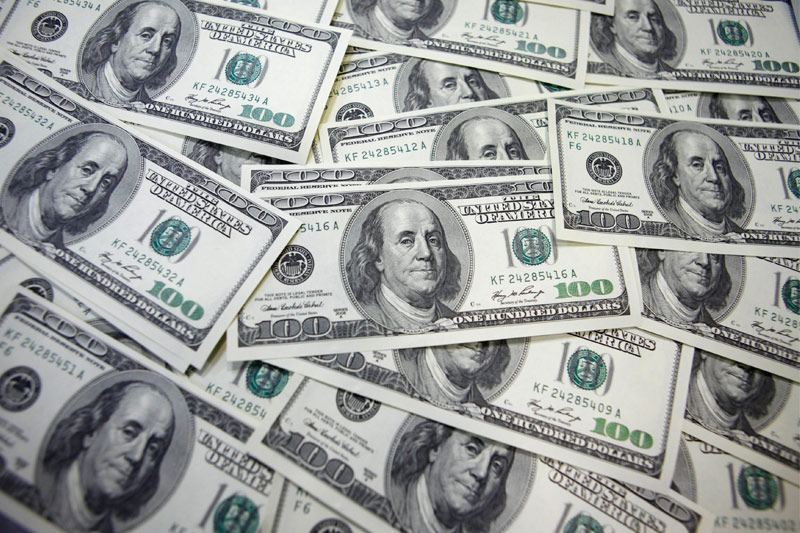Investing.com - The dollar traded largely higher against most major currencies on Tuesday after investors shrugged off a soft consumer confidence report and took up positions anticipating the Federal Reserve will make further cuts to its stimulus program this week.
In U.S. trading on Tuesday, EUR/USD was down 0.28% at 1.3811.
The Conference Board, a market research group, said its consumer confidence index declined to 82.3 in April from a 83.9 in March, whose figure was revised up from a previously reported 82.3.
Analysts had expected the index to inch down to 83.0 in April.
The Present Situation Index decreased to 78.3 from 82.5, while the Expectations Index was virtually unchanged at 84.9 versus 84.8 in March.
“Consumer confidence declined slightly in April, as consumers assessed current business and labor market conditions less favorably than in March,” Lynn Franco, Director of Economic Indicators at The Conference Board, said in a statement.
“However, their expectations regarding the short-term outlook for the economy and labor market held steady. Thus, while sentiment regarding current conditions may have slipped a bit, consumers do not foresee the economy, or the labor market, losing the momentum that has been building up over the past several months.”
The dollar largely ignored the data as the report was not seen as weak enough to indicate the economy was softening to the point that the Federal Reserve will slow up the pace at which it tapers its monthly bond-buying program.
Fed bond purchases, currently set at $55 billion a month, weaken the dollar by suppressing long-term borrowing costs, and expectations for further Fed tapering tends to strengthen the greenback.
Meanwhile in Europe, Germany’s Federal Statistics Bureau reported that the country's consumer price index fell 0.2% in April from March and rose 1.3% on year.
Markets were calling for a monthly decline of 0.1% and an annual increase of 1.4%, which softened the euro against the dollar.
The data came as investors were looking ahead to preliminary data on euro zone inflation due for release on Wednesday, and Germany's numbers wiped out previous expectations for an uptick in consumer prices.
Euro zone inflation concerns eclipsed a soft report on consumer confidence out of the U.S., which investors shrugged off as lackluster as opposed to disappointing.
The dollar was up against the yen, with USD/JPY up 0.08% at 102.57 and up against the Swiss franc, with USD/CHF up 0.36% at 0.8834.
The greenback was down against the pound, with GBP/USD up 0.14% at 1.6830.
Sterling initially edged lower after the Office of National Statistics reported that the U.K. economy grew 0.8% in the first quarter, bringing the annual rate of growth to 3.1%.
Market expectations had been for quarterly growth of 0.9% and an annual expansion of 3.2%, though the actual figure was still the fastest rate of annual growth since the fourth quarter of 2007, which gave the pound an edge over the dollar.
The dollar was down against its cousins in Canada, Australia and New Zealand, with USD/CAD down 0.68% at 1.0955, AUD/USD up 0.18% at 0.9273 and NZD/USD up 0.20% at 0.8555.
The US dollar index, which tracks the performance of the greenback versus a basket of six other major currencies, was up 0.13% at 79.88.
Aside from the Fed's announcement on monetary policy, markets on Wednesday will track preliminary data on first quarter GDP, as well as the ADP report on private-sector job creation, which leads the government’s nonfarm payrolls report by two days. The U.S. is also to release data on manufacturing activity in the Chicago region.
